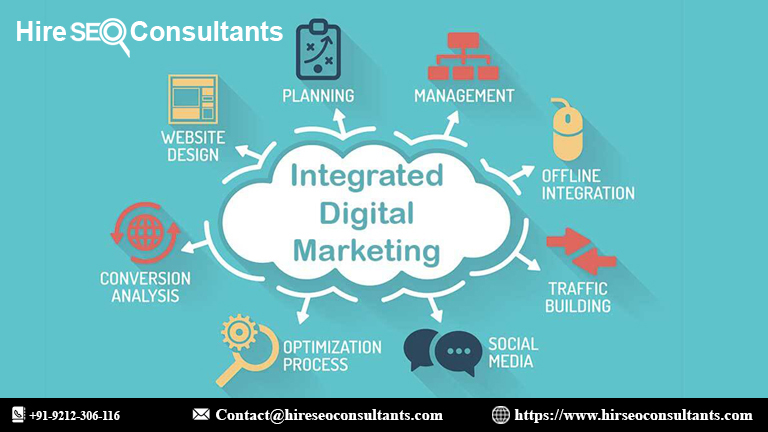Why CE Certification Is Your Passport to Global Business Growth
Get CE certification to be eligible to market your products in Europe! Ensure the health and safety of your products today with IAS! Apply now!
I. Introduction
A. Overview of CE Certification and Its Importance
CE Certification is a regulatory framework ensuring that products meet the stringent safety, health, and environmental protection standards of the European Economic Area (EEA). For businesses, it represents more than compliance—it’s a mark of quality, reliability, and innovation. CE Marking is mandatory for many products to legally circulate within the EU, protecting consumers and leveling the playing field for manufacturers. With rising global competition, CE Certification has become a critical asset for business growth and sustainability.
B. Why Businesses Should Prioritize CE Marking
Businesses prioritizing CE Marking position themselves as leaders in safety and compliance. This certification not only fulfills legal requirements but also boosts customer trust. It communicates that the company values quality and consumer well-being. Companies with CE-certified products benefit from reduced barriers to trade, enhanced reputation, and the ability to stand out in saturated markets. Moreover, prioritizing CE Certification fosters a culture of regulatory awareness, which is increasingly vital in today’s interconnected world.
C. Global Perspective on CE Certification
Though CE Certification originates in Europe, its significance extends globally. Many non-EU countries accept or align with European standards, giving businesses a broader market reach. CE Marking often serves as a benchmark for international quality, allowing companies to establish credibility in competitive markets. As consumer awareness about safety standards grows, CE Certification provides a tangible demonstration of commitment to excellence, making it a global passport for trade and business expansion.
II. What is CE Certification?
A. Definition and Key Features of CE Marking
CE Marking is a conformity assessment symbol that verifies a product’s compliance with applicable EU directives. Key features include:
-
Mandatory Nature: Required for products entering the EEA.
-
Wide Applicability: Covers a range of products, from electronics to medical devices.
-
Legal Assurance: Grants access to the EU market while ensuring adherence to safety, health, and environmental standards.
CE Marking simplifies trade by offering a unified compliance approach, reducing the need for country-specific regulations.
B. CE Certification as a Mark of Compliance
Achieving CE Certification signifies a product’s compliance with essential EU regulations, including safety, environmental sustainability, and performance criteria. It involves rigorous testing and documentation, reflecting a manufacturer’s commitment to excellence. This compliance builds customer confidence and mitigates risks of penalties, bans, or product recalls, which could damage a company’s reputation and finances.
C. Industries That Commonly Require CE Certification
-
CE Certification spans numerous industries, such as:
-
Medical Devices: Ensuring safety and functionality for patients.
-
Electronics: Adhering to electromagnetic compatibility standards.
-
Construction Products: Meeting structural and safety guidelines.
-
Toys and Consumer Goods: Guaranteeing safety for end-users, especially children.
By adhering to CE standards, these industries gain competitive advantages in the EU and global markets.
III. Benefits of CE Certification for Businesses
A. Ensures Compliance with European Standards
CE Certification assures regulatory compliance, providing legal clearance for products to enter the EEA. This eliminates potential trade barriers, preventing fines and recalls. It also fosters internal accountability by encouraging businesses to implement robust quality management systems.
B. Boosts Customer Confidence and Market Credibility
Customers trust products with the CE Mark, associating it with safety, reliability, and superior quality. This trust translates into higher sales, stronger brand loyalty, and a competitive edge in crowded markets. Displaying the CE Mark enhances credibility with distributors and partners, making your products a preferred choice.
C. Simplifies Access to European and Global Markets
The CE Mark is recognized across all EU member states and several other countries. It reduces the need for multiple certifications, saving time and resources. By meeting CE requirements, businesses streamline their market entry strategies and focus on scaling operations.
IV. Global Business Growth Through CE Certification
A. Opens Doors to International Opportunities
CE Certification positions businesses as global contenders, opening access to the EU market and countries that accept CE standards. This international reach fosters partnerships, collaborations, and expanded customer bases. By aligning with European standards, companies are better equipped to enter diverse markets with minimal regulatory adjustments.
B. Increases Brand Value and Recognition
CE-certified products signal quality, compliance, and reliability. This boosts brand recognition and positions businesses as industry leaders. The certification adds credibility when negotiating with distributors, investors, or regulators, paving the way for long-term growth.
C. Encourages Innovation and Product Improvement
The rigorous CE Certification process encourages companies to innovate and refine their offerings. Businesses must integrate cutting-edge technologies, sustainable practices, and advanced testing to meet requirements. These improvements increase product appeal, enhancing both market performance and customer satisfaction.
V. Steps to Obtain CE Certification
A. Understanding the Applicable Directives and Standards
Begin by identifying relevant EU directives for your product. For instance, toys must comply with the Toy Safety Directive, while electronics follow the EMC Directive. Understanding these frameworks is essential to meeting regulatory demands effectively.
B. Testing, Documentation, and Assessment Processes
-
Testing: Conduct laboratory tests to ensure product safety and compliance.
-
Documentation: Create a technical file, including product descriptions, design details, and risk assessments.
-
Assessment: Submit products for conformity assessments to confirm adherence to standards.
These steps require precision and attention to detail to avoid costly errors.
C. Engaging Notified Bodies for Certification
Certain products require third-party assessments by Notified Bodies. These organizations provide independent evaluations, ensuring your product meets EU standards. Collaborating with reputable Notified Bodies can simplify the process and improve success rates.
VI. Common Challenges in CE Certification
A. Navigating Complex Regulatory Requirements
EU directives and standards can be intricate, making it difficult for businesses to identify applicable requirements. Missteps can lead to delays or non-compliance. Engaging regulatory experts helps simplify this complexity.
B. Cost and Time Considerations for Certification
CE Certification involves significant investment in testing, documentation, and assessments. Without proper planning, costs can escalate. Budgeting and establishing clear timelines ensure an efficient process.
C. Overcoming Technical and Documentation Barriers
Many businesses struggle with incomplete documentation or technical non-compliance. Detailed preparation, pre-assessments, and seeking professional guidance address these issues, ensuring a smooth certification journey.
VII. How to Choose the Right Partner for CE Certification
A. Qualities of a Reliable Certification Partner
Look for partners with proven industry experience, transparent processes, and strong reputations. A reliable partner should provide end-to-end support, from initial consultations to final certification.
B. Importance of Expertise and Industry Knowledge
A knowledgeable partner understands specific directives and industry nuances. Their expertise ensures that your product complies fully, reducing errors and expediting certification.
C. Tips for Avoiding Fraudulent Certifiers
Verify certifications, affiliations, and customer reviews before choosing a certification partner. Avoid organizations offering unrealistically low costs, as these often lack credibility and expertise.
VIII. Case Studies: Businesses Thriving with CE Certification
A. Real-Life Examples of Successful Global Expansion
A renewable energy company gained CE Certification, enabling them to secure contracts across Europe and double their market share. Similarly, an electronics manufacturer expanded into 15 countries, leveraging CE Marking to enhance customer trust and partnerships.
B. Lessons Learned from Certification Journeys
These businesses highlight the importance of preparation, expert partnerships, and investing in quality. Their success underscores how CE Certification can transform market reach and profitability.
C. Key Takeaways for Aspiring Businesses
Embrace CE Certification as a tool for growth. Focus on compliance, collaborate with reliable partners, and maintain high-quality standards to thrive in competitive markets.
IX. Conclusion
A. Recap of Key Reasons to Pursue CE Certification
CE Certification enhances legal compliance, market access, customer trust, and brand recognition. It is an essential investment for businesses aiming to expand globally.
B. Final Thoughts on Global Business Growth Potential
CE Certification is more than a legal requirement; it’s a gateway to new opportunities. With this certification, businesses can drive innovation, boost reputation, and achieve sustainable growth.
C. Call to Action: Start Your CE Certification Journey
Take the leap toward global success. Begin your CE Certification process today to unlock new markets, build customer trust, and elevate your brand on an international scale.
What's Your Reaction?


















